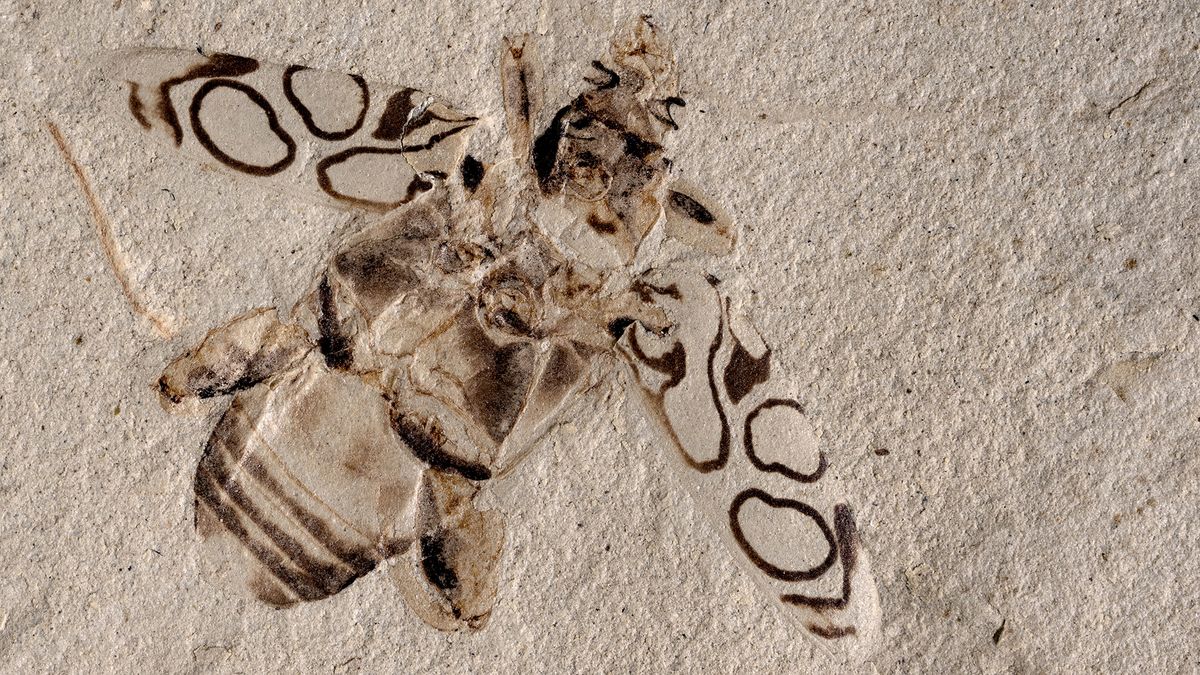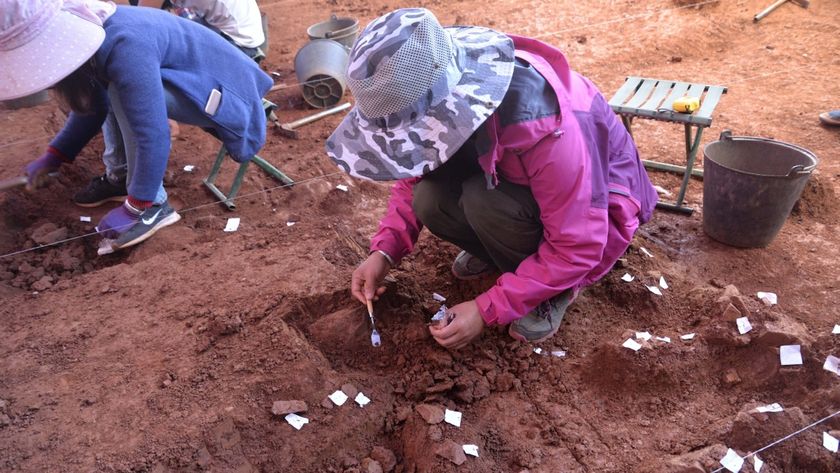49 million-year-old beetle looks like it was squashed yesterday
Paleontologists named the insect "Attenborough's Beauty," after Sir David Attenborough.

A beetle that lived about 49 million years ago is so well-preserved that the insect looks like it could spread its strikingly patterned wing coverings and fly away. That is, if it weren't squashed and fossilized.
Wing cases, or elytra, are one of the sturdiest parts of a beetle's exoskeleton, but even so, this level of color contrast and clarity in a fossil is exceptionally rare, scientists recently reported.
The beautiful design on the ancient beetle's elytra prompted researchers to name it Pulchritudo attenboroughi, or Attenborough's Beauty, after famed naturalist and television host Sir David Attenborough. They wrote in a new study that the pattern is "the most perfectly preserved pigment-based colouration known in fossil beetles."
Related: Meet the beetles: Stunning museum specimens from London
When the researchers described the beetle beauty, it was already in the collection of the Denver Museum of Nature and Science (DMNS) in Colorado, where it had been on display since it was identified in 1995. Paleontologists found the fossil that year in the Green River Formation; once a group of lakes, this rich fossil site spans Colorado, Wyoming and Utah, and dates to the Eocene epoch (55.8 million to 33.9 million years ago).
Scientists initially classified the fossil as a long-horned beetle in the Cerambycidae genus. But while its body shape resembled those of long-horned beetles, its hind limbs were unusually short and beefy, which led the museum's senior curator of entomology — Frank-Thorsten Krell, lead author of the new study — to question if the beetle might belong to a different group.
In the study, the authors described the beetle as a new genus in a subfamily known for its robust and powerful hind legs: frog-legged leaf beetles. The fossilized insect, a female, is only the second example of a frog-legged leaf beetle to be found in North America, Krell told Live Science in an email (no modern beetles in this group live in North America today, according to the study). On P. attenboroughi's back, dark and symmetrical circular patterns stand out in sharp contrast against a light background. This suggests that bold patterns were present in beetles at least 50 million years ago, the researchers reported.
Sign up for the Live Science daily newsletter now
Get the world’s most fascinating discoveries delivered straight to your inbox.

For a beetle to fossilize as well as this one did, "you need a very fine-grained sediment," Krell said. Silt or clay at the bottom of a lake is the best substrate for fossilizing insects, and the beetle must sink quickly into the silty lake bottom before its body disintegrates. "And then it should not rot, so an oxygen-poor environment on the lake floor is helpful," he said.
However, questions still remain about how sediments in the lake bottom preserved the beetle's high-contrast colors so vividly, Krell added. Visitors to the DMNS can admire P. attenboroughi for themselves, as the renamed fossil is back on display in the museum's "Prehistoric Journey" exhibit, representatives said in a statement.
The findings were published Aug. 6 in the journal Papers in Paleontology.
Originally published on Live Science.

Mindy Weisberger is an editor at Scholastic and a former Live Science channel editor and senior writer. She has reported on general science, covering climate change, paleontology, biology and space. Mindy studied film at Columbia University; prior to Live Science she produced, wrote and directed media for the American Museum of Natural History in New York City. Her videos about dinosaurs, astrophysics, biodiversity and evolution appear in museums and science centers worldwide, earning awards such as the CINE Golden Eagle and the Communicator Award of Excellence. Her writing has also appeared in Scientific American, The Washington Post and How It Works Magazine. Her book "Rise of the Zombie Bugs: The Surprising Science of Parasitic Mind Control" will be published in spring 2025 by Johns Hopkins University Press.











